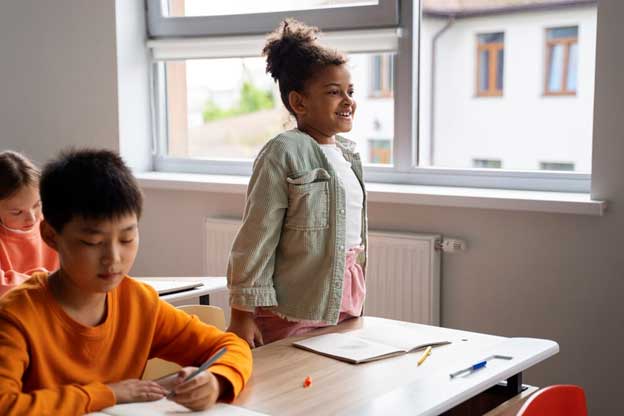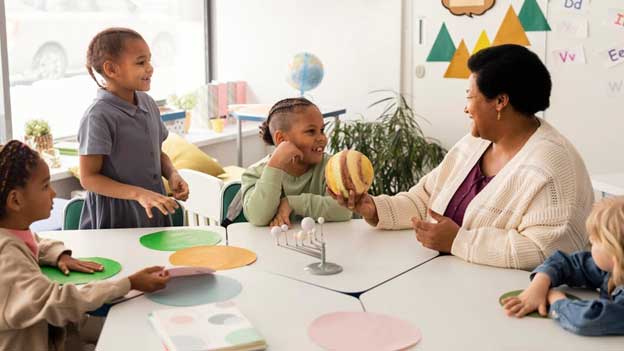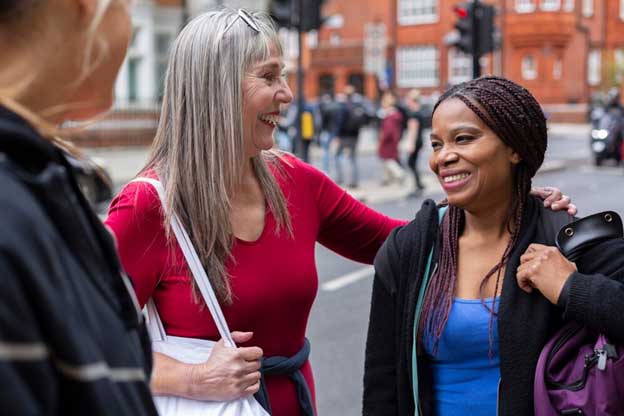As a first-year teacher, you’ve likely been bombarded with the same generic advice:
- “Establish firm routines.”
- “Post rules on the wall.”
- “Walk around to control behavior.”
- “Don’t smile till November.”
At first, these suggestions might sound logical. But when you’re in the thick of a chaotic classroom—managing distracted students, emotional outbursts, and endless differentiation—these strategies often feel like putting out a forest fire with a garden hose.
Traditional classroom management strategies focus on controlling behaviors rather than addressing the underlying energy dynamics that shape those behaviors. What if there was a deeper, more transformative approach? Imagine implementing transformative classroom energy management techniques that tap into the energy of your students and the learning environment. This shift from surface-level strategies to energy-based approaches fosters authentic connection and growth.
Transform Your Classroom: Energy Management Techniques
Rigid Rules Don’t Address Emotions
Strict classroom rules might look good on paper, but they rarely resonate with students dealing with anxiety, trauma, or unmet emotional needs. Students bring invisible struggles into the classroom, and those struggles manifest as disruptive behavior.
For example, a student who frequently interrupts lessons might not be a “rule breaker” but a child seeking attention to counter feelings of neglect or insecurity. Rules can’t resolve this emotional disconnect.
However, when expectations are collaboratively created, students feel empowered and invested in maintaining a positive environment. This shared ownership fosters a sense of belonging and encourages students to bring their best selves to class each day. Novak Education has a great blog on co-creating classroom expectations.
Rewards Lose Their Power
Sticker charts and token systems may create temporary compliance but fail to build intrinsic motivation. Once the novelty wears off, students often revert to previous behaviors. Worse, such systems can alienate students who struggle to meet expectations, creating resentment instead of cooperation.
True behavioral change comes from helping students understand why their actions matter—not because of an external reward, but because they value their contributions to the community.
Control Is Not Connection
Walking around the classroom to monitor behavior might stop disruptions temporarily, but it doesn’t build the connection needed for lasting engagement. Students thrive in environments where they feel seen and respected, not micromanaged. By shifting from control to connection and energy alignment, you can build a classroom environment that promotes harmony and focus.
Traditional classroom management strategies are surface-level solutions that fail to address the deeper energy dynamics shaping your classroom. Instead of focusing solely on behavior, what if you could realign the energy that drives it?
Control Is Not Connection
Walking around the classroom to monitor behavior might stop disruptions temporarily, but it doesn’t build the connection needed for lasting engagement. Students thrive in environments where they feel seen and respected, not micromanaged. By shifting from control to connection and energy alignment, you can build a classroom environment that promotes harmony and focus.
Traditional classroom management strategies are surface-level solutions that fail to address the deeper energy dynamics shaping your classroom. Instead of focusing solely on behavior, what if you could realign the energy that drives it?
Co-Creating Classroom Expectations
What Quantum Energy Practices can Improve Classroom Dynamics?
To truly transform your classroom, you must shift from a surface-level approach to one that harmonizes energy and builds genuine connections. Quantum physics shows us that energy follows thought. Quantum energy-based classroom management strategies offer a way to harmonize the energy in your classroom, address root causes of disruption, and create an environment where you and your students can thrive. You can learn more about energy management and well-being practices that help you thrive, not just survive from TeachersConnect.
Let’s explore six transformative quantum energy-based classroom management strategies that will take your teaching to a higher level.
Ready to unlock the power of quantum energy in your classroom?
Join TeachersConnect to access actionable tools, share visualization techniques, and connect with educators transforming their teaching through energy-based strategies. Start thriving today!
Energy Techniques for a Calm and Focused Classroom
Programming your classroom starts before you step foot in it each morning. Visualization is a powerful tool for directing energy and setting intentions for your classroom. When you visualize the behaviors and outcomes you want to see – such as creating a calm and focused learning environment – you influence the quantum field to align with those intention.
1. Morning Visualization Practice: Spend 5–10 minutes each morning sitting quietly. Once you are relaxed, close your eyes and see your classroom as a space of peace, focus, and collaboration.
- See your students engaged and joyful.
- Picture the room filled with warmth and light.
- Feel the depth of pride and peace you would feel when the room is buzzing with the sounds of students learning.

Teacher practicing quantum energy visualization techniques, preparing to align classroom energy for focus and harmony.
2. Reframe Individual Challenges: If a particular student struggles with disruptions, visualize them surrounded by soft, white light. See them participating calmly and confidently.
Pair Visualization with Gratitude: Feel genuine gratitude for the positive behaviors as though they’ve already happened. This emotional alignment strengthens the energy you project.
A student who constantly interrupts might be visualized raising their hand calmly, speaking with enthusiasm, and engaging constructively. Repeat this visualization daily, already feeling the energy of your desired outcome, like calm, joy, and connection. The more intense positive emotion you feel during the visualization, the better!
If this sounds too simple to really work, keep reading to learn how visualizing your desired outcome helps bring it about more quickly.
Why Quantum Energy Alignment Works
- Visualization shifts your own energy toward positivity, creating a ripple effect that students pick up on unconsciously.
- By focusing on the outcome you want—and truly feeling it—you create a ripple effect that changes all the micro ways you interact with your students and they instinctively pick up your well-being intentions.
If you’re looking for more practical ways to integrate these concepts into your daily routine as a teacher, check out our blog on Unconventional Self-Care Strategies for Teachers. It offers simple, actionable hacks like sensory resets and commute rituals to help you recharge and stay balanced.
Share your visualization success stories with the TeachersConnect community to inspire others and refine your techniques.
Alpha-State Reprogramming: Mantras That Shape Your Classroom Energy
Your brain’s alpha state—achieved during moments of calm focus—is a gateway to the subconscious mind. When you access this state and use specific mantras and feelings of already having what you desire, you program your mind and the quantum field with intentions that transform your energy, and thus, your teaching environment.
How Quantum Energy Aligns Classroom Dynamics

Teacher embracing alpha-state mindfulness outdoors, aligning energy through meditation to enhance focus and classroom harmony.
- Access the Alpha State: Begin with a simple relaxation technique, such as slow, deep breathing or a guided meditation. Allow your mind to settle into a calm yet alert state.
- Use Intentional Mantras: Repeat affirmations designed to shape the energy of your classroom. Examples include:
“My classroom radiates joy, focus, and cooperation.”
“I am a calm, present guide for my students.”
“Every student is engaged, inspired, and supported.” - Feel the Emotion: Pair the words with a strong emotional response, such as gratitude or excitement. This amplifies their power in the quantum field.
Practical Example:
If your classroom often feels chaotic, enter an alpha state before class and repeat: “My classroom is a peaceful place where every student thrives.” Visualize the calm energy spreading throughout the room and see students learning. Feel how you would feel when calm energy does spreads through the room and students are focused on learning. Hold onto that feeling as you teach.
Practical Examples of Energy Alignment for Classroom Behavior Management
If your classroom often feels chaotic, enter an alpha state before class and repeat: “My classroom is a peaceful place where every student thrives.” Visualize the calm energy spreading throughout the room and see students learning. Feel how you would feel when calm energy does spreads through the room and students are focused on learning. Hold onto that feeling as you teach.
- Alpha-state programming bypasses mental resistance and directly influences your subconscious mind, which interacts with the quantum field.
- Your energy becomes a powerful attractor for the outcomes you envision, influencing not only your behavior but your students’ responses.
Collaborate with other educators to create and exchange custom mantras that resonate with shared classroom goals.
Feel inspired to bring energy alignment into your teaching?
Join TeachersConnect for custom mantras, teacher success stories, and a
community dedicated to transformative teaching strategies. Reframe your
challenges and thrive with us today!
Energy Alignment: Using Your Presence to Influence the Room
As the teacher, you are the energetic anchor for your classroom. By aligning your energy with the a specific intention for learning and oy, you set the energetic tone for how students engage.
How Energy Alignment Works

Teacher practicing mindful stretching for energy alignment, promoting focus and harmony as part of effective classroom management strategies
- Ground Yourself Before Class: Start the day with a grounding practice. With both feet firmly on the ground, take deep breaths, and imagine roots extending from your feet into the earth. This stabilizes your energy and prepares you to lead.
- Radiate Intentional Energy: Visualize yourself as a radiant source of calm and focus. Imagine an aura of golden light emanating from you, influencing everyone in your classroom.
- Channel Energy Toward Specific Students: If a student is particularly disruptive, imagine sending them a stream of calming, positive energy. Picture them surrounded by a protective bubble of light, feeling safe and seen.
Practical Example:
During a chaotic moment, pause and center yourself. First, ground yourself by bringing your awareness to the soles of your feet. Second, take a deep breath. Third, quickly imagine a calm energy spreading through the room. Fourth, focus on the student who needs extra support, send them calm vibes as you walk toward them, seeing them relaxing and becoming more engaged. Fifth, speak your calm truth to the student. Sixth, repeat as necessary.
Why Energy Alignments Help You Impact Your Classroom Dynamics
- Your energy directly impacts the classroom dynamic. When you remain grounded and intentional, students mirror that energy.
- By consciously aligning your presence, you create a stable foundation that helps students feel secure and focused.
Share your grounding rituals and energy alignment practices with the community for feedback and inspiration.
What Need is the Student Trying to Meet with Disruptive Behavior?
Quantum principles teach us that challenges carry hidden gifts. When you approach disruptions as opportunities for growth, you can tap into the very real human needs students have disruptive behaviors. Remember, every behavior is driven by a need. Children just haven’t learned to align their strategies for meeting their needs with socially acceptable behavior yet. Every disruptive behavior has the opportunity for you to learn more about that student, their needs and to see them in a different way (beyond their behavior). Doing that means approaching them with the belief that there is a gift in this for you and them. For example, seeing a disruptive student as a natural leader can help channel their energy toward positive contributions, turning disruptions into opportunities for deeper classroom connections
How it Works

- Pause and Reframe: When a student acts out, take a deep breath and ask yourself: “What is this situation teaching me?”
- See the Student’s Potential: Instead of focusing on the problem, focus on their unmet needs.
- Take Inspired Action: Let your insights guide your response. For example, if a student disrupts because they crave attention, give them a meaningful role, such as leading an activity or helping a peer.
Practical Example
A student who constantly talks over others during group work might be reframed as a natural leader. Give them the role of group facilitator, channeling their energy into a positive contribution.
Why it Works
- Shifting from frustration to curiosity opens the door for creative, compassionate solutions.
- Students feel valued and understood, which reduces disruptive behaviors and strengthens relationships.
- While this seems difficult at first and changes are not seen overnight, there is a cumulative effect of reframing how you handle the students’ behavior in positive ways.
5. Co-Creating the Classroom Energy Field
Students are not just passive participants in your classroom—they actively contribute to its energy field. By involving them in the process of creating a positive environment, you foster collaboration, accountability, and shared responsibility.

How it Works
- Set Collective Intentions: On an as-needed basis, lead your class in a simple visualization exercise. Ask students who are comfortable closing their eyes to do so and imaging the kind of classroom they want to be part of. If you think students might not feel comfortable with closing their eyes, ask them to draw the type of classroom they’d like to be part of. Ask students to share their thoughts.
- Collaborative Mantras: Create classroom affirmations together, such as:
“In this room, we respect and support each other.”
“We are a team, and every voice matters.” - Daily Energy Check-Ins: Use a simple tool, such as a color-coded chart, to let students share their energy levels (e.g., calm, focused, restless) and adjust as needed.
Practical Example
After a difficult day, lead the class in a collective affirmation: “Tomorrow, we will come together with kindness and focus.” Encourage students to share their own visions for how to create a better environment.
Why it Works
- Students feel empowered to shape their learning environment, fostering accountability and mutual respect.
- Collective energy amplifies individual efforts, creating a harmonious and productive classroom.
Find out more about how to co-create classroom expectations with your students HERE.
Testimonial
“When I taught first grade, I would engage students in using their senses to visualize specifically what they wanted their classroom to look like, sound like and feel like. Students typically frame things from a negative stance like, “don’t be mean,” or “don’t run.” Since the brain will focus more on the action, rather than the negation, “don’t” I knew it was important to support them with reframing, like: “We will treat each other with kindness and respect,” or “We will walk safely through the classroom.” Allowing students to visualize the environment that they want to learn in each day, is powerful with supporting student ownership of expectations.” – Laura
6. The Power of Community: Amplifying Energy Through Collective Wisdom
Teaching can feel isolating, but it doesn’t have to be. Your energy as a teacher is powerful, and when combined with the wisdom and support of a like-minded community, it becomes unstoppable. TeachersConnect is a space where you can share, learn, and grow alongside educators who understand the challenges and rewards of the classroom.
At TeachersConnect, we believe in an education system where teachers’ well-being is as vital as student success. While the current system demands ever-increasing sacrifices from teachers in the name of student achievement, we know that depleted teachers cannot create thriving classrooms. TeachersConnect exists to transform teaching from an unsustainable sprint into a fulfilling career by providing the authentic community and the innovative well-being practices that teachers need to flourish.

How it Works
- Collective Visualization: Join the TeachersConnect’s community and virtual events to practice shared visualization techniques. Amplify your energy by aligning your intentions with teachers who have similar goals.
- Mantra Exchange: Collaborate with teachers to create a library of custom affirmations tailored to specific classroom challenges, such as managing disruptive behaviors or fostering student collaboration.
- Challenge Reframing: Share your “gift-finding” moments with the community and gain new perspectives on how to approach difficult situations.
You can post about a particularly disruptive class dynamic in the TeachersConnect forum. Within hours, you’re likely to get lots of practical advice, success stories, and even specific visualization or mantra suggestions from educators who’ve been in your shoes.
Why it Works
- Collective energy is stronger than individual effort. By tapping into the experiences and insights of others, you accelerate your growth and broaden your perspective.
- You gain a support network that not only provides solutions but also reminds you of your purpose and power as an educator.
Embrace the Quantum Shift
Traditional classroom management strategies focus on shaping behaviors without addressing the deeper energy dynamics at play. By using quantum energy techniques like visualization, alpha-state mantras, energy alignment, reframing challenges, and co-creating a positive energy field, you can transform your classroom into a thriving space where you and your students experience harmony, growth, and connection.
Are you ready to embrace the power of quantum energy in your classroom?
We want to hear your stories! Share your experiences with these strategies in the educators-only Quantum Classroom Circle community. Visit TeachersConnect to get your Circle invitation today. Each month, we’ll feature one teacher’s journey in our blog—and the winner will receive a book of choice for their classroom.
Join TeachersConnect today to access powerful tools, connect with like-minded educators, and discover the true potential of quantum energy management in education.
Click here to join TeachersConnect and transform your classroom—and your teaching journey—today!


